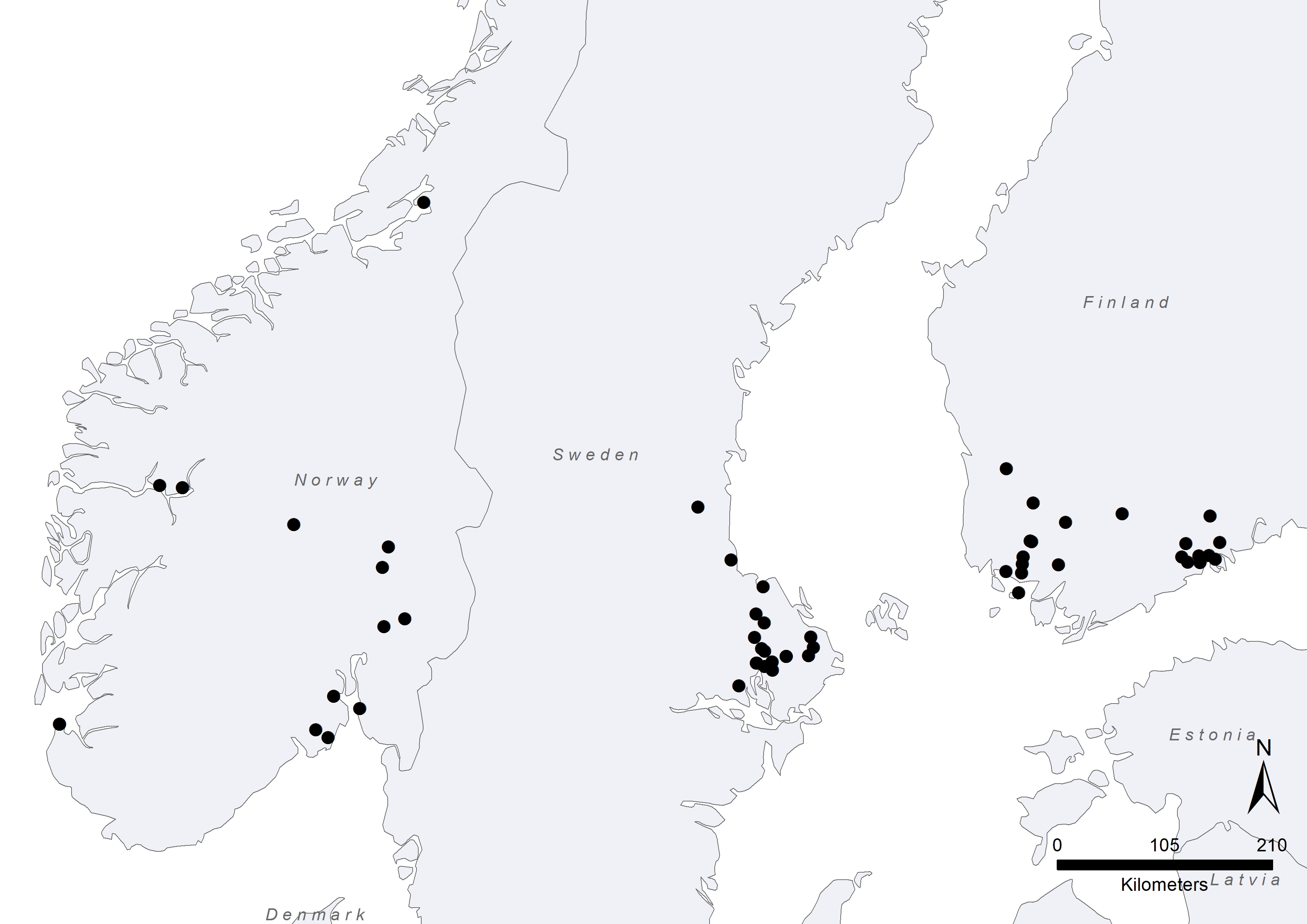4 Feline poisoning cases in Nordic countries
As there is no official register for reporting suspected AC-poisoning in the Nordic countries, the total number of poisoning cases is unknown. However, some studies and reports have been published indicating the extent of the problem. In a report from the Norwegian Veterinary Institute (NVI), AC-poisoning was verified in 30 cats and four dogs in samples collected from various Norwegian veterinary clinics from December 2019 to June 2020 (6). The Swedish Small Animal University Hospital had approximately 80 suspected and 25 confirmed feline cases admitted from January 2014–February 2020 (2). In Finland, 149 and 19 poisoning cases of cats and dogs, respectively, have been notified to Tukes in 2018–2021 (9). In the extensive study on AC poisoning in cats in three Nordic countries (1), AC-poisoning was confirmed in 59 Nordic cats (fig 4).

Figure 4: The geographical distribution of the cases in the Windahl et al. study (2022). Reproduced by permission from the publisher
AC poisoning has not only been a Nordic phenomenon. In comparison, data from the Belgian Poison Centre reported a similar emerging of AC poisonings in mostly dogs in the period 2016–2019, with a total of 1, 97, 128 suspected cases in 2017, 2018 and 2019 respectively (10). Furthermore, a survey among German veterinarians revealed that after authorization of AC-containing rodenticides in 2018, 39 out of 65 respondents noticed a significant increase in poisoning cases in cats and dogs attributed to AC (11). To our knowledge, this has not been confirmed by measurement of AC in samples from the animals, and the possibility of secondary poisoning has not been investigated in these countries.